Christian Skredsvig (1854–1924) is written into Norwegian art history through iconic images such as Seljefløyten (1889) and Sankthansaften (1886). 100 years after his death, Henie Onstad highlights his modern ambitions in a major new exhibition.
Christian Skredsvig lived in Bærum for a long time and painted several motifs from, among other places, Sandvika, Høvik and Fleskum. He is linked to art traditions deeply rooted in the 19th century and not immediately to thoughts about the modern. Nevertheless, the curatorial ambition of the exhibition Christian Skredsvig – Towards Modernity is to highlight Skredsvig's modernity. Not by claiming that he broke through as a modernist himself, but by showing the ambitions, conflicts and choices that he as an artist was confronted with on the way to such an artistic goal.
Skredsvig's time was a time of enormous change in many areas. He took an active part in the ambitions and challenges of this time in an often convincing way. 100 years after his death, the artist and his contemporaries invite new readings and revisions.
Few Norwegian artists are as popular and versatile as Christian Skredsvig. Skredsvig enjoyed great success in Paris with his magnificent Salon paintings, which thrilled the critics and perhaps inspired the Impressionist Claude Monet, as speculated by this exhibition, among other things. Following his success in Paris, he also became the most prominent Fleskum painter of his time, with well-known works such as Seljefløyten and Sankthansaften.
Skredsvig painted side-by-side with Edvard Munch on the French Riviera, but never became a distinct modernist in the same way as his younger friend. In the exhibition, Skredsvig's complicated relationship with the tendencies of modernism is examined by including several other artists, such as Edvard Munch, Kitty Kielland, Harriet Backer, Erik Werenskiold and Eilif Petersen.
The exhibition reveals the contradictions in a well-known artistry, and looks at how the modern arises through hard-won negotiations between innovation and tradition. Not least, the exhibition takes a new look at Fleskumsommeren of 1886.
Åpningstider
Tirsdag — Onsdag 11:00 — 17:00
Torsdag 11:00 — 20:00
Fredag — Søndag 11:00 — 17:00
Mandag Stengt
Avvikende åpningstider
Påske (åpent alle dager unntatt mandagene)11:00 — 17:00
1. maiStengt
17. maiStengt
Kr. himmelfart 29. mai11:00 — 17:00
Pinse (åpent alle dager unntatt mandag)11:00 — 17:00
Sankthansaften 23. juni17:00 — 21:00
22.-26. desemberStengt
31. desember-1. januarStengt



